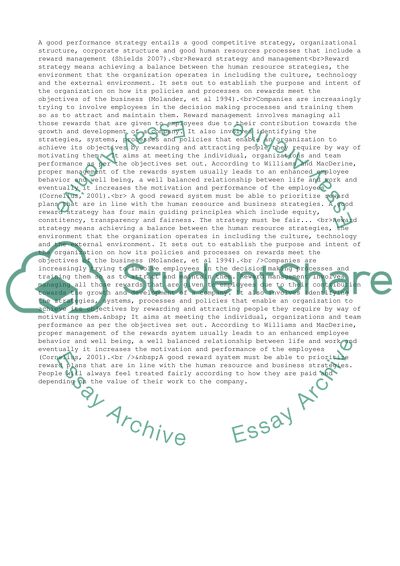Cite this document
(“Performance and Reward Management Essay Example | Topics and Well Written Essays - 3000 words”, n.d.)
Performance and Reward Management Essay Example | Topics and Well Written Essays - 3000 words. Retrieved from https://studentshare.org/business/1508903-performance-and-reward-management
Performance and Reward Management Essay Example | Topics and Well Written Essays - 3000 words. Retrieved from https://studentshare.org/business/1508903-performance-and-reward-management
(Performance and Reward Management Essay Example | Topics and Well Written Essays - 3000 Words)
Performance and Reward Management Essay Example | Topics and Well Written Essays - 3000 Words. https://studentshare.org/business/1508903-performance-and-reward-management.
Performance and Reward Management Essay Example | Topics and Well Written Essays - 3000 Words. https://studentshare.org/business/1508903-performance-and-reward-management.
“Performance and Reward Management Essay Example | Topics and Well Written Essays - 3000 Words”, n.d. https://studentshare.org/business/1508903-performance-and-reward-management.


